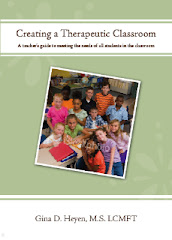The purpose of this book is to give educators fresh insight on how to maintain discipline while teaching academics. This task has become more difficult over the last decade as the emotional and physical needs of children have increased along with the academic outcomes of the presidential program No Child Left Behind.
The instructional classes utilized for training teachers focus primarily on how to present information to students. A novice teacher will learn the majority of their classroom management skills during their student teaching practicum. The concern that evolves from this theory is that the experienced teacher has established the classroom structure and the student teacher only needs to maintain it. When a novice teacher tries to duplicate the structure in their own classroom they find that the classroom management method isn't as functional for them, and they struggle to maintain discipline in their classroom. Another concern for teachers to contemplate is that every town and school district has its' own unique set of issues in their community that must be considered when establishing their classroom structure. If a teacher isn't employed in the school district where they completed their student teaching practicum, they will need to acclimate to their new environment. Several school districts will assign a mentor teacher to a novice teacher for support during this time to ease the stress while they adjust and learn the district's expectations.
My intention is to share suggestions teachers can integrate into their own teaching style, to assist them in creating an environment that enhances the learning in every child. I also hope to address the needs of children with mental health concerns. These children can be very disruptive when they feel a need for support and security, and that can affect the learning of all children in the classroom.
Wednesday, November 21, 2007
Friday, November 2, 2007
Effective Classroom Managers
Effective classroom teachers are effective managers.
Effectively managed classrooms are learner focused and responsive to the needs of all students.
Becoming and continuing to be an effective classroom manager is a career long process for the professional educator.
In Creating a Therapeutic Classroom, Gina D Heyen brings together two perspectives from her professional background: that of the classroom teacher, and the professional counselor/therapist in addressing the aspects which are to be considered in creating a classroom which facilitates the teaching/learning process for all learners.
The ideas and suggestions presented are detail oriented, simple and straight forward, are research based, and reflective of the Best Practices concept espoused by the education profession.
Acknowledging the reality that there is no "one right way" to accomplish effective practices, the author continually reminds the reader to keep "Ideas which work" as well as encouraging "Ideas I'd like to try."
Both the novice and seasoned veteran teacher can benefit from these contents not only in a potentially new directions for exploration, but also from the validation of support for practices which may be "tried and true."
Rich Bicker
Associate Professor of Teacher Education
Southwestern College
Winfield, KS
Effectively managed classrooms are learner focused and responsive to the needs of all students.
Becoming and continuing to be an effective classroom manager is a career long process for the professional educator.
In Creating a Therapeutic Classroom, Gina D Heyen brings together two perspectives from her professional background: that of the classroom teacher, and the professional counselor/therapist in addressing the aspects which are to be considered in creating a classroom which facilitates the teaching/learning process for all learners.
The ideas and suggestions presented are detail oriented, simple and straight forward, are research based, and reflective of the Best Practices concept espoused by the education profession.
Acknowledging the reality that there is no "one right way" to accomplish effective practices, the author continually reminds the reader to keep "Ideas which work" as well as encouraging "Ideas I'd like to try."
Both the novice and seasoned veteran teacher can benefit from these contents not only in a potentially new directions for exploration, but also from the validation of support for practices which may be "tried and true."
Rich Bicker
Associate Professor of Teacher Education
Southwestern College
Winfield, KS
Subscribe to:
Posts (Atom)
